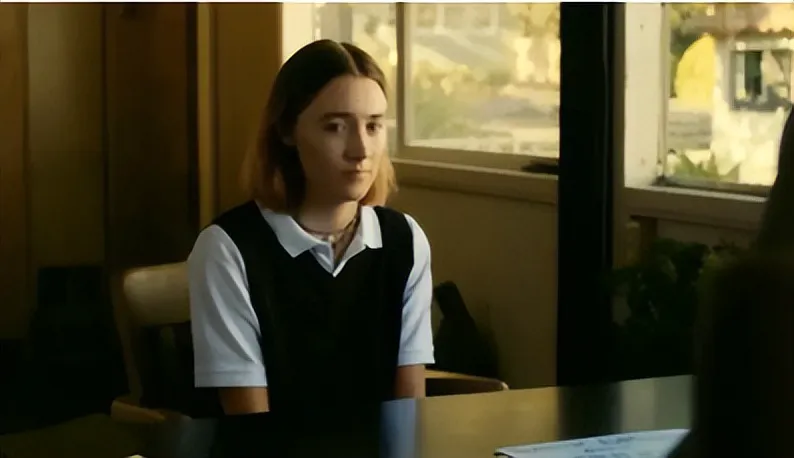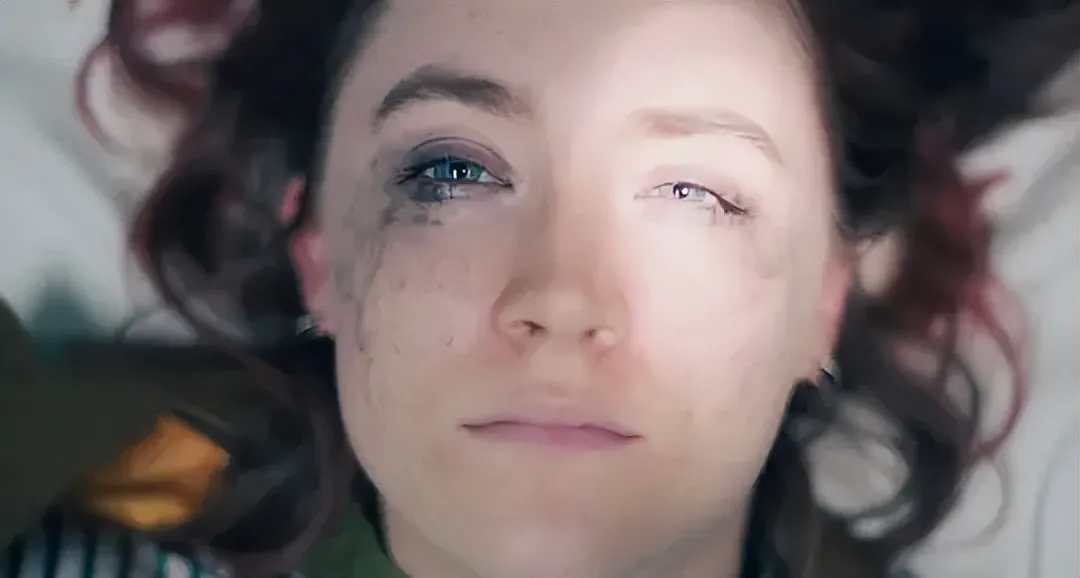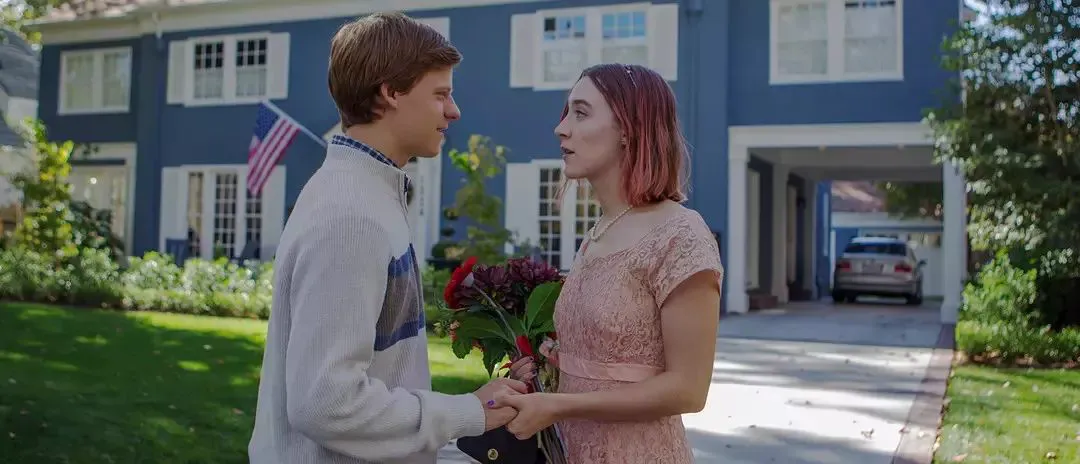Introduction
In the realm of cinema, each frame serves as the genesis of a story, and every shot offers a glimpse into the complexities of human nature and society.
In “Lady Bird,” director Greta Gerwig invites us into the formative years of an ordinary young woman, revealing profound emotions and insightful reflections within the tapestry of everyday life.

More than just a blend of visuals and sound, the film is a collision of emotions and ideas. Through the lens of a girl’s coming-of-age, it explores family dynamics, the evolution of self-awareness, and the influence of the surrounding era.
Within this narrative, we find echoes of ourselves, projected onto the screen, guiding us to contemplate and evolve.

Unveiling the Plot
Set in California in 2002, the film chronicles the journey of Christine McPherson, portrayed by Saoirse Ronan, a high school senior with aspirations of leaving her hometown to discover her true identity.
The story opens with the strained relationship between Christine and her mother, Marion. A generational divide exists between them, fueling Christine’s desire to escape her mother’s expectations and embrace a more vibrant and artistically stimulating urban life.

Christine attends a private school, but she is troubled by concerns about her family’s financial situation and social challenges at school.
Alongside her best friend, Julie, Christine navigates the trials of high school, including academic pressures, romantic entanglements, and the quest for self-discovery. She also becomes involved in a complicated relationship with Danny.
As the narrative unfolds, Christine begins to recognize her connection to her family and her mother, prompting her to reflect on her aspirations and dreams.
She decides to apply to colleges in New York, seeking an independent life. However, upon receiving her college acceptance results, she finds herself plagued by the uncertainty of the future.
After overcoming numerous obstacles, Christine and Marion’s relationship is elevated, and the mother and daughter gradually realize the importance of each other.
The film concludes with Christine taking a step into adulthood, facing an unknown future, leaving the audience to imagine her future story.
The film’s plot, with its warmth, humor, and authenticity, depicts a teenager’s growth process in self-awareness and family relationships, winning high praise from audiences and critics alike.
Exploring the Themes
Several themes are woven into “Lady Bird,” with growth and self-discovery being among the most prominent.
Through the experiences of the protagonist, Christine, the film showcases how a young girl in the year before high school graduation experiences self-identity, interpersonal relationships, family pressures, and other aspects of growth.
This theme runs throughout the film, presenting the joys, challenges, explorations, and contradictions that accompany growth through the protagonist’s emotions and experiences.
Closely related to the theme of growth is family relationships. The film portrays the complex relationship between Christine and her mother. The disputes, understanding, and reconciliation between this mother and daughter reflect the influence of family in the growth process.
This theme highlights the value of family affection and how to find one’s own independent path in growth while maintaining contact with the family.
Another important theme is social status and self-worth. The social pressures, changes in peer relationships, and her uncertainty about her future all reflect the exploration of social status and personal self-worth.
This theme emphasizes the psychological challenges faced by young people in the process of growing up and how to find balance in the pursuit of self-identity.
At the same time, the film also involves several minor themes such as friendship, love, and financial status, which enrich the emotional and plot levels of the film.
These themes are integrated into the use of color in the film, bringing a sublimation to the entire film.
The Use of Color in the Film
The use of color in “Lady Bird” plays an important role in the entire film in terms of emotional expression, theme reinforcement, and character development.
Director Greta Gerwig skillfully conveys changes in the emotions of the characters and the plot of the film through changes and contrasts in color.
At the beginning of the film, the tone is warmer, using soft yellows and oranges to create a warm and intimate family atmosphere.
This use of color expresses the emotional bond between the protagonist and her family, as well as her deep affection for her hometown.
As the story progresses, the colors become more diverse and vivid. The protagonist Christine’s personality and determination to pursue independence are reflected in the colors, and the colors of her clothing and surroundings become more vivid.
At the same time, as she explores and pursues the outside world, the colors in the film gradually become more diverse, reflecting her vision for the future and her energetic attitude.
The film also uses some contrasting scenes. In the prom scene, the use of color in this part changes from the previous bright and vivid to more dim, expressing the unease and uncertainty that the protagonist and her classmates will face at the turning point in their lives.
This use of color and the director’s shooting techniques complement each other, creating an effect of one plus one greater than two for the film.
Cinematographic Techniques
“Lady Bird” employs a range of distinctive cinematographic techniques and visual elements to amplify emotional expression, character development, and narrative delivery.
Greta Gerwig skillfully utilizes camera language and composition to create an intimate and authentic viewing experience.
The film makes extensive use of close-up shots, immersing the audience in the protagonist’s emotional inner world. By capturing facial expressions, gazes, and subtle gestures, the film presents the character’s emotional changes and inner conflicts.
This close-range shooting technique enhances the audience’s emotional resonance with the protagonist, bringing them closer to the character’s inner experience.
Moreover, the film employs handheld camera techniques, adding a sense of naturalness and authenticity to the film. This shooting technique makes the picture more dynamic, as if the audience is experiencing the development of the plot along with the characters.
The handheld camera also gives the film a sense of documentary, making the audience feel like they are there, experiencing the ups and downs of the story with the characters.
In addition, the film also uses some special lens transitions, such as fast editing and cross fades, to enhance emotional transmission and scene transitions.
These transition techniques make the film more emotionally smooth and add a dynamic layer to the rhythm and emotional ups and downs of the story.
It is not difficult to see that “Lady Bird” creates an intimate and authentic visual experience through close-up shots, handheld cameras, special transition techniques, and careful use of color.
These shooting techniques are combined with emotional expression to allow the audience to more deeply understand the protagonist’s inner world and growth process.
Symbols, Metaphors, and Visual Elements
“Lady Bird” enhances its themes and emotions through subtle symbols, metaphors, and visual elements, with the nickname “Lady Bird” being one of them.
Christine gave herself the nickname “Lady Bird.” This name is not just a simple nickname; it symbolizes her desire for freedom and independence.
The choice of this name is an expression of her personal identity and self-identity. She is not satisfied with ordinary life, but longs to fly, like a free bird.
This nickname appears repeatedly in the film, emphasizing Christine’s motivation to pursue autonomy and leave her hometown.
Another symbol in the film is “Castillo,” which is Christine’s last name.
This surname means “castle” in Spanish. It can be seen as a kind of protection, but it is also a kind of restriction. This name implies Christine’s internal and external contradictions between family and hometown.
She longs to escape this “castle” and find her own independence, but she cannot get rid of its shackles.
In the film, some items are also used as talismans or symbols, such as Christine’s pink talisman bracelet. This bracelet appears many times in the film, symbolizing her personal pursuit and her complex relationship with her mother.
It also reflects Christine’s personality and her desire to find her place in the world.
Moreover, the content also involves some biblical metaphors, such as the scene where Christine is in the church and her interaction with a priest named “Father Leviatch.”
These elements can be seen as an allusion to religious and moral concepts, and also emphasize Christine’s personal values and in-depth exploration of moral issues.
In addition to obscure pattern symbols, the director also put a lot of effort into the colors, just like the pink scene we saw. This color appears frequently in the film.
It represents Christine’s personality and pursuit. In contrast, blue is usually associated with family and reality, reflecting Marion’s real concerns and economic responsibilities.
These symbols, metaphors, and visual elements together construct the multi-layered meaning of the film, enrich the emotional story, and strengthen the complexity of the characters.
It also gives the audience more opportunities to think deeply about the themes and characters in the film, and at the same time makes “Lady Bird” more profound and fascinating on an emotional and symbolic level.
Emotional Resonance and Social Discussion
This film has won widespread emotional resonance from audiences with its realistic and warm emotional descriptions. The film depicts Christine’s growth process and her complex relationship with her mother. These emotions have resonated with audiences.
Whether it is teenagers or adult audiences, they can find their own shadow in the film, because the themes discussed, such as family, friendship, self-awareness, and pursuit, are all common in everyone’s life.
It not only triggered emotional resonance on a personal level, but also triggered discussions on a social level. The feminist issues, family economic problems, and adolescent growth struggles involved in the content have triggered in-depth thinking among audiences and critics.
These issues touch on current social concerns and prompt people to conduct more in-depth discussions and reflections on topics such as gender, family, and education.
Moreover, this film has established its special position in film history. Director Greta Gerwig has transformed the growth story of an ordinary girl into a thought-provoking film masterpiece through her keen observation and delicate emotional depiction.
With its unique perspective and emotional depth, the film has gained recognition in the independent film field and has won high praise from film critics and audiences. It is considered a highly successful work in terms of emotional expression, growth depiction, and social reflection.
Conclusion
In this film, we witness the growth process of an ordinary girl. She gradually matures in struggle and exploration, and also re-examines her relationship with her family, friends, and herself.
This film is not only a story about growth, but also a mirror, reflecting the emotions and desires deep in the hearts of each of us.
Just as the nickname “Lady Bird” symbolizes, we are all little birds eager to fly, pursuing our own freedom and independence.
However, on the road to flying to the distance, we will also experience various struggles, confusions, and bewilderment. The film presents multiple levels of this growth process, using Christine’s story as a mirror.
Whether it is family entanglements, changes in friendship, or confusion about the future, they are all shown in the film, triggering resonance from the audience.